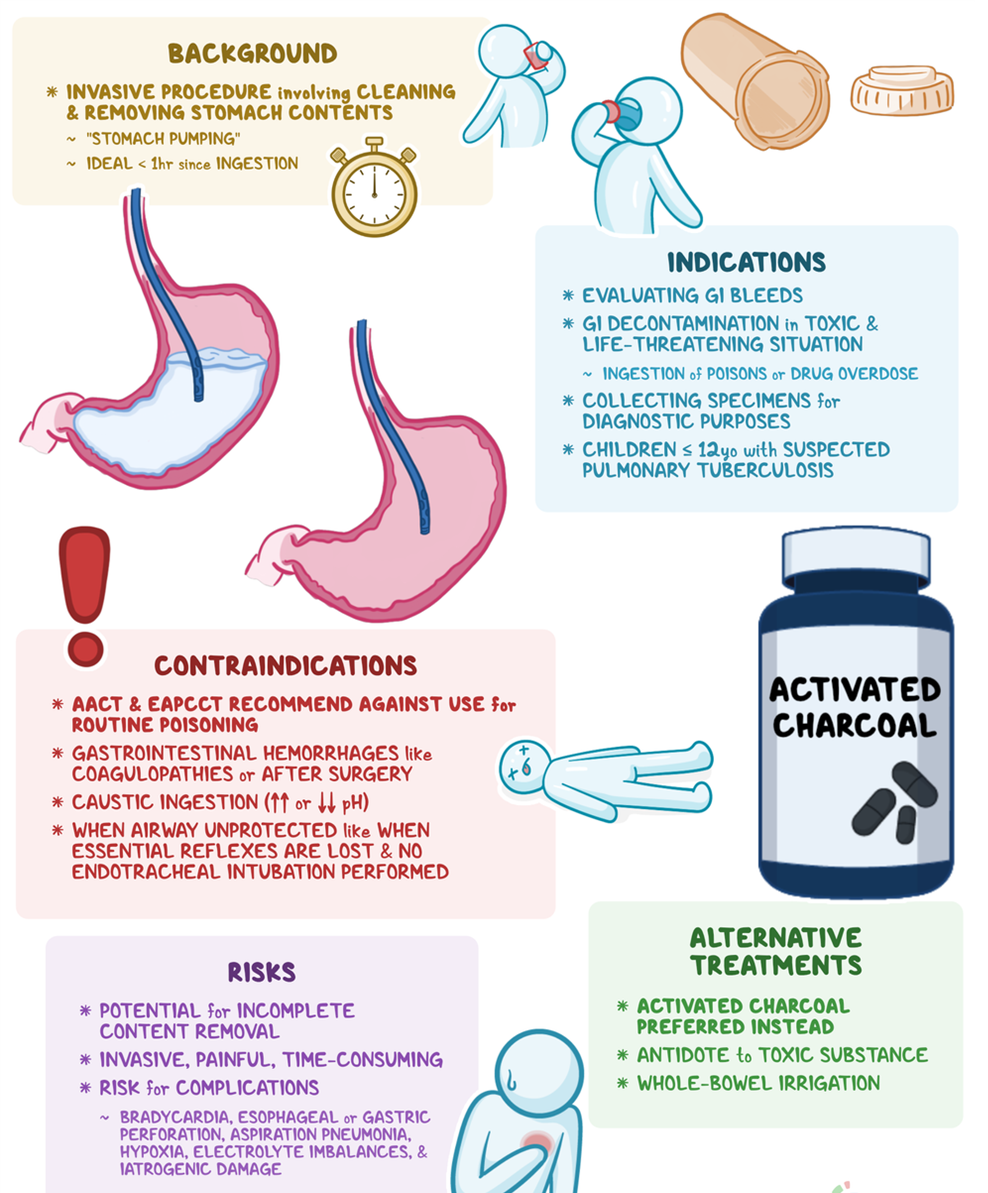A nurse is performing gastric lavage on a client using a large-bore NG tube. Which of the following actions should the nurse take?
Position the client on the right side.
Instill 1000 mL of sterile saline.
Withdraw fluid until it is clear.
Connect the NG tube to high continuous suction.
The Correct Answer is C
A. Positioning the client on the right side is not a standard recommendation for gastric lavage. The standard position is typically on the left side to facilitate the drainage of gastric contents.
B. Instilling 1000 mL of sterile saline is not a recommended action for gastric lavage. Gastric lavage involves the removal of stomach contents rather than instilling fluids.
C. Withdrawing fluid until it is clear is the correct action. Gastric lavage is a medical procedure used to empty the stomach contents. The process involves introducing small amounts of fluid (such as saline) into the stomach and then aspirating it back, along with gastric contents, until the aspirate is clear.
D. Connecting the NG tube to high continuous suction is not a standard approach for gastric lavage. Gastric lavage involves intermittent instillation and withdrawal of small amounts of fluid to clear the stomach.

Nursing Test Bank
Naxlex Comprehensive Predictor Exams
Related Questions
Correct Answer is D
Explanation
A. 7.8%
An HbA1c value of 7.8% indicates an average blood sugar level over the past 2-3 months that is higher than the optimal range. This suggests that the client may not be achieving optimal glucose control.
B. 8.5%
An HbA1c value of 8.5% also indicates elevated average blood sugar levels over the past few months. This value suggests poorer control of diabetes, and adjustments to the management plan may be needed.
C. 10%
An HbA1c value of 10% indicates higher average blood sugar levels, signifying inadequate control of diabetes. This value suggests a need for intervention and modification of the treatment plan to achieve better glucose management.
D. 6.3%
An HbA1c value of 6.3% is considered a relatively good indicator of glucose control. This value suggests that the client has been successful in maintaining lower average blood sugar levels over the past 2-3 months, reflecting effective diabetes management.
Correct Answer is D
Explanation
A. Applying a cold pack to the client's upper arm is not the first action. The priority is to assess and address the cause of the edema. Cold packs may be used for comfort, but they do not address the underlying issue.
B. Removing the PICC line is not the first action. Before considering removal, it is essential to assess the extent and cause of the edema. Removing the line without proper evaluation could lead to premature discontinuation of necessary treatment.
C. Notifying the provider who inserted the PICC line is important, but it is not the first action. The nurse needs to assess and intervene promptly. The provider should be informed after initial actions are taken.
D. Stopping the infusion and measuring the circumference of both upper arms is the first action. This helps determine the extent of the edema and whether it is related to the infusion. It is crucial to assess for complications such as infiltration or extravasation of the TPN solution.
Whether you are a student looking to ace your exams or a practicing nurse seeking to enhance your expertise , our nursing education contents will empower you with the confidence and competence to make a difference in the lives of patients and become a respected leader in the healthcare field.
Visit Naxlex, invest in your future and unlock endless possibilities with our unparalleled nursing education contents today
Report Wrong Answer on the Current Question
Do you disagree with the answer? If yes, what is your expected answer? Explain.
Kindly be descriptive with the issue you are facing.
